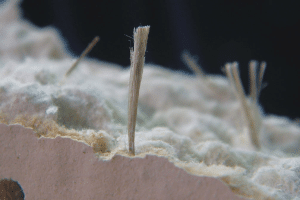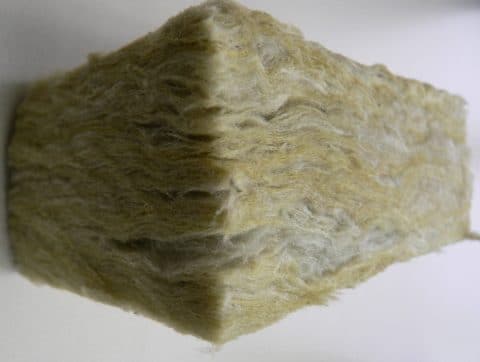Asbestos Testing
Our asbestos analysis laboratory offers a quick testing service for all types of materials. You are welcome to drop off or post a sample to us, or one of our qualified technicians can visit your site to sample.
Asbestos Testing
Our asbestos analysis laboratory offers a quick testing service for all types of materials. You are welcome to drop off or post a sample to us, or one of our qualified technicians can visit your site to sample.
Our Christchurch asbestos lab is IANZ-accredited for bulk asbestos identification and asbestos air filter analysis. We can also analyse asbestos in soil concentrations.
Following sampling by yourself or our technician, we weigh the sample and prepare it for analysis. This may involve drying, ashing or dissolving in a solution. Then we look over the sample with a low-powered microscope. This is followed by polarised light microscopy (PLM) with dispersion staining.
This method uses the refractive properties of the material to positively identify asbestos. We are accredited to identify the three most common forms of asbestos:
- Chrysotile (white asbestos)
- Amosite (brown asbestos)
- Crocidolite (blue asbestos)
- Cement sheet cladding, gables and soffits
- Textured ceilings
- Vinyl flooring
- Fuse boards
- Hot water cylinders and fireplace insulation
- Corrugated cement roofing or fencing
While the properties of asbestos have led to widespread industrial use of it, these same properties have made it particularly resistant to the body's defenses. When disturbed, asbestos splits into increasingly fine fibres which can become airborne and inhaled deep into the lungs.
The three more serious, and better known diseases associated with asbestos exposure are:
- Asbestosis
- Lung cancer
- Mesothelioma (cancer of the external lining of the lung)
Mesothelioma and asbestos-related lung cancer typically do not appear until 20-30 years after exposure, but the survival rates after diagnosis are low. There is no known "safe dosage" of asbestos. The risk of developing asbestos-related lung cancer is vastly higher for smokers.
Asbestosis is an irreversible lung scarring and inflammation of the lung tissue which can cause laboured breathing and a persistent cough. Unlike lung cancer and mesothelioma, it is only associated with high levels of exposure over many years.
Asbestos is a term used to refer to six naturally-occurring silicate minerals. All are composed of long and thin fibrous crystals that can be released into the air when disturbed. K2 Environmental are accredited to identify the three most common asbestos types.

Chrysotile or "white" asbestos
By far the most common type of asbestos (90-95%), chrysotile possesses a silky, lustrous quality. Its flexible fibres make it perfect for weaving into fabric or ropes.Chrysotile possesses high tensile strength and remains stable in an alkali environment, so is often used in asbestos cement products. It is considered less toxic so was in use for many years later than other types of asbestos. Chrysotile is the only type of asbestos in the serpentine category (the other types of asbestos are called amphiboles).

Amosite or "brown" asbestos
The fibres of amosite and other amphiboles are more brittle and break lengthways making them a much higher risk. Amosite is commonly used as a fire retardant in insulation boards. Its high absoption ability meant it was commonly used in material to reduce condensation or to provide acoustic insulation. The brown or gold colour comes from its high iron content.

Crocidolite or "blue" asbestos
The dull blue-grey crocidolite has very fine, brittle fibres that are easily lodge in the lungs. It is considered the most hazardous type of asbestos. Crocidolite has incredibly high tensile strength and chemical resistance but is also flexible enough to be woven. Like other amphiboles, crocidolite is particularly resistant to acids. It is also the best insulator due to its open lattice formation which efficiently traps air. However, it is much less heat-resistant than other types.
The other three types are anthophyllite, tremolite and actinolite. If these types are detected, we must report them as "unidentified mineral fibres" or UMF.
Your certificate of analysis may state that organic or synthetic mineral fibres are detected. What does this mean?
Organic fibres refer to natural fibres such as hessian or wool or synthetic organic fibres like nylon, polyester and Kevlar. Some organic fibres such as Kevlar and carbon fibres have evidence of adverse health effects but generally organic fibres are not linked with any health effects. The use of organic fibres in building materials is widespread from carpets and vinyl backing to Hardie board and old fibrous plaster.
Synthetic mineral fibres (SMFs) — otherwise known as man-made mineral fibres (MMMFs) — are non-crystalline fibrous materials that include rock wool, glass fibres or ceramic fibres. They are often used for insulation, fire-proofing or reinforcing in building materials as an alternative to asbestos. The health effects of SMFs are not conclusively known. SMFs can cause irritation of the skin and eyes and may cause irritation of the upper respiratory tract in excessively dusty conditions. Because some SMFs can contain fibres of respirable size, all SMFs are classed as "possibly carcinogenic to humans". Safe work practices should ensure dust levels are kept low when working with SMFs.
If your sample material contains organic fibres or SMFs in the matrix of the material or in significant quantities, we will report along with the asbestos result.
- Cement sheet cladding, gables and soffits
- Textured ceilings
- Vinyl flooring
- Fuse boards
- Hot water cylinders and fireplace insulation
- Corrugated cement roofing or fencing

